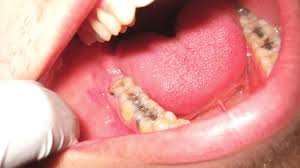
The count and type of teeth you have will change as you grow old. The two types of teeth that most people have throughout their lifetimes are primary, also known as baby teeth, and permanent, also known as adult teeth. This article looks at the types Of Teeth that adults and kids have and their functions.
Because we are human, we have two types of teeth. We begin to develop a set of baby teeth while still in the womb. Our infant teeth form our jaws and mouths, allowing us to chew properly and articulate our first words. A child typically has twenty primary baby teeth, ten on each side of the mouth. As we develop and our jaws mature, they are eventually replaced by 32 permanent adult teeth, 16 on each jaw.
Types Of Teeth
During a person’s lifespan, their mouth will produce five types of teeth: incisors, canines, premolars, second molars, and third molars. Although four of the five types are transitory, a permanent tooth will eventually replace a primary tooth. Only the third molars, or wisdom teeth, appear once in a person’s lifetime, usually between the ages of 18 and 20.
Most people get their wisdom teeth extracted because they tend to block the mouth. When it comes to digestion, each of these five types of teeth has a specific purpose. You should take extra care of your teeth since they play an essential purpose that extends far beyond the beauty of your smile.
Incisors
The incisors are the eight teeth in the front of a person’s mouth. Each upper and lower tooth set has eight incisors, four on each side. The front teeth are commonly known as that.
These teeth are intended to aid you in eating. Primary incisors typically erupt at six months of age, making them the first teeth to appear. At the age of six to eight years, a new set of incisors will grow in to replace them.
Canines.
The canines are the teeth that appear next in the mouth. Each of these incisors is the sharpest in the mouth. They are used to break down and dissect food so the body can absorb it more easily. The first canines appear between the ages of 16 and 20 months.
Primary canine teeth erupt first, followed by lower teeth. Permanent canines replace them. These teeth usually begin to appear between the ages of nine and twelve. Lower teeth often emerge before upper teeth, in contrast to major canines. Lower canines typically mature around the age of nine, while upper canines typically mature between eleven and twelve.
Premolars.
Your premolars are found directly behind your canines. Adults have premolar teeth on either the top or bottom of their jaw. Premolars have two cusps that are identical to molars.
Surprisingly, they have a flat top and are used to chew food. Chewing causes premolars to break down food into tiny bits. You may not be aware, but your premolars help keep your face at a consistent height.
Molars.
Our molars, which are located at the back of our mouths, grind our food. Adults usually have 12 teeth, four of which are referred to as wisdom teeth.
On either the upper or lower jaw, three molars can be seen. Our larger teeth are required for chewing, grinding, and clenching. Wisdom teeth, which are located in the four corners of your mouth in the back, usually appear between the ages of 18 and 25. Most people will experience pain as soon as their teeth break through the gum line.
Third molars are found in the back of the mouth.
The third molars are the last teeth to develop and the first adult permanent teeth to grow. These molars are more commonly known as “wisdom teeth.” Third molars do not usually appear until the late teens or early twenties, but this is not always the case. Most patients must have these teeth extracted because they cause tooth crowding.
When should you have your wisdom teeth extracted?
When wisdom teeth erupt and become visible, they are routinely removed. Nonetheless, wisdom teeth that do not erupt regularly and become impacted must be extracted. Wisdom teeth that are impacted may become infected, damage adjacent teeth, or cause other oral health issues over time.
The following are signs that your wisdom teeth are impacted:
- Gums that are inflamed or bleeding
- Swollen or red gums, as well as throbbing in the jaw
- Bad breath that refuses to go.
- a sour taste on your mouth
- Having difficulty opening your mouth to chew
- Aches and pains that persist
When you visit your dentist regularly and have x-rays taken, he or she will almost certainly discuss the condition of your wisdom teeth. You should seek emergency medical attention if you see any of the symptoms mentioned above.
Conclusion:
incisors, canines, premolars, and molars are all types of human teeth. Most children will have all of their 20 adult teeth by age three. By the age of 21, almost 80 percent of people will have all 32 of their adult teeth. Teeth are required for proper food chewing and speaking. Dentists advise patients to brush and floss their teeth at least twice daily to maintain them strong and healthy. People should practice the following daily practices to keep their mouths and teeth healthy: Cleaning teeth twice a day.
Brush and floss your teeth at least once a day with fluoride toothpaste. consuming a healthy, well-balanced diet while avoiding excessive consumption of sugary beverages and meals can ensure healthy teeth.
To keep your teeth healthy and spot any problems early, you should visit the dentist twice a year for a cleaning and a checkup.
